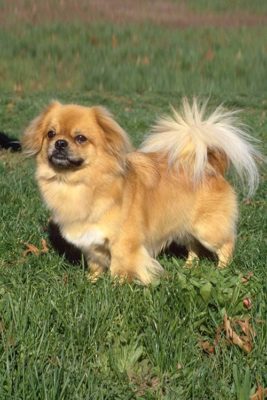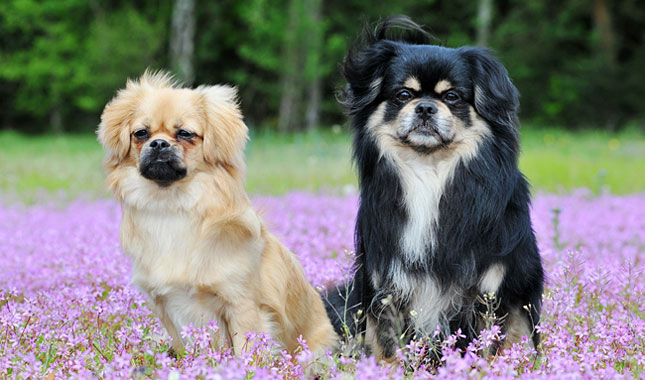Tibetan Spaniel
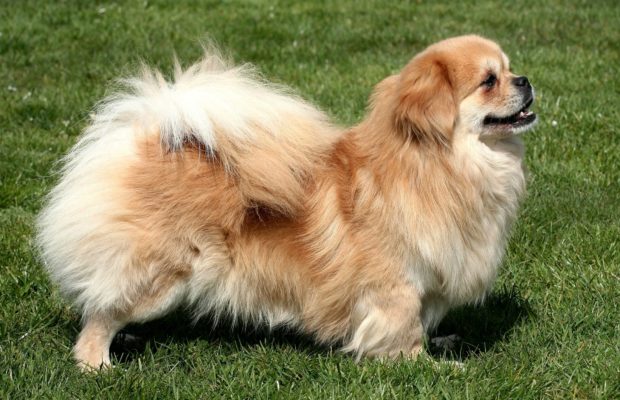
For centuries, the Tibetan Spaniel has been independent and stubborn. Often the dog can disobey commands: instead of running up to the owner, it will go to a stranger. It is because the Tibetan Spaniel loves to explore the territory and the world around him. At the same time, it is gifted with intelligence and aware of what is required.
Table of Contents
Breed Information
| Another Name | – |
| Origin | Tibet |
| Height | 25 cm |
| Weight | 4-7 kg |
| Fur | Long |
| Color | White, black, black with red undertones, sable, cream |
| Lifespan | 12-15 years |
| FCI Classification | Companion and Toy Dogs |
| Group | Small breed or decorative dogs, guard dogs, dogs for children, dogs for apartments |
| Price | From $500 |
Breed Photos
Origin History
The history of the Tibetan Spaniel began in the 8th century. The details of the origin of the breed are not accurately studied. There was a trade-in dog between Tibet and China. Therefore, one of the versions says that dogs are the heirs of Shih Tzu and Pekingese. Tibetan Spaniel were known to be popular in their homeland. They lived in the monasteries of the mountain country and lived in the homes of ordinary people.
Representatives who acted as pets were larger. The smaller dogs were sent to monasteries. Thus a type of “Monastic Tibetan Spaniels” appeared. They were recognized as the more elite members of the breed. Interestingly, the dogs who lived closer to the border with the Celestial Empire had a flattened snout. The reason for this was the crossing of Tibetan Spaniels with the Chinese Pug.
For hundreds of years, Tibetan Spaniel have had an unspoken nickname of small lions. Since lions were considered sacred guardians, having a Tibetan Spaniel in the home was supposed to bring good luck. The breed also acted as a worthy gift. Tibetan aristocrats, rulers, and monks often gave dogs to Chinese officials.
Most of the representatives lived in their homeland and the Celestial Empire. The Tibetan Spaniel came to Britain at the end of the 19th century. The British obtained specimens in the border areas. The FCI recognized the breed in 1987.
Appearance
Tibetan Spaniels are dogs with an elongated torso, a small head, and a slightly flattened muzzle. Their eyes are medium-sized and wide-set. Most often brown or dark brown. The standard of the breed does not allow bulging eyes. Also does not recognize fangs when the mouth is closed. The ring-shaped tail fits the back of the back. A thick, soft coat is considered an excellent addition. The neck is covered with a thick coat as if the dog were wearing a tie. Males have a thicker coat.
Character
For centuries, the Tibetan Spaniel has been independent and stubborn. Often the dog can disobey commands: instead of running up to the owner, it will go to a stranger. It is because the Tibetan Spaniel loves to explore the territory and the world around him. At the same time, it is gifted with intelligence and aware of what is required.
Innate mistrust creates a need for early socialization. New acquaintances make a dog open. The animal does not hide its emotions. If he feels anxiety, he will let out a howl. At home, Tibetan Spaniel is like a cat: he likes to climb on tables, show interest in the couch, play with toys. It relates to children with patience, but there is a limit. It can easily perform a guarding function.
Care
The breed’s activity and cheerfulness force owners to practice frequent walks. Joint jogging or playful activities are good. Because of possible ear disease, regular grooming is worthwhile. Check the cleanliness of the ear canals once or twice a week. Wax secretions should be removed with dry cotton swabs. It is better not to use sticks in order not to harm the pet. Eyes and claws need similar regular care. Three times a week, comb the hair with a brush, getting rid of dead particles.
Training
The sharp mind of the breed representative allows them to learn a set of commands at once. As puppies, they quickly learn the basic set of tricks. The main thing is regular training with respect, love, and trust.
Common Diseases
Dogs boast good health and longevity. However, Tibetan Spaniels are prone to allergic reactions, crying or cherry eyes, and retinal atrophy. Third eyelid prolapse also occurs.
Nutrition
Smoked, fatty, and sugary foods should be removed from the pet’s diet. It also includes foods seasoned with salt, spices, and starch. Pasta and flour products are also not suitable for the diet of the Tibetan Spaniel. Two-thirds of the daily diet should be lean meat – beef or veal. Low-fat cottage cheese and natural sour-milk products can be given in the morning. For maximum benefit, add honey and calcium from time to time. Such a combination will help to fight viruses and boost immunity in winter.
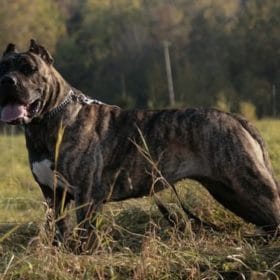 Presa Canario
Presa Canario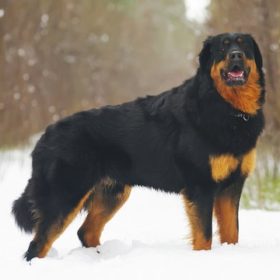 Buryat-Mongolian Wolfhound
Buryat-Mongolian Wolfhound Jack Russell Terrier
Jack Russell Terrier Chinese Crested Dog
Chinese Crested Dog Cavalier King Charles Spaniel
Cavalier King Charles Spaniel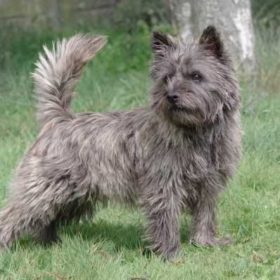 Cairn Terrier
Cairn Terrier
